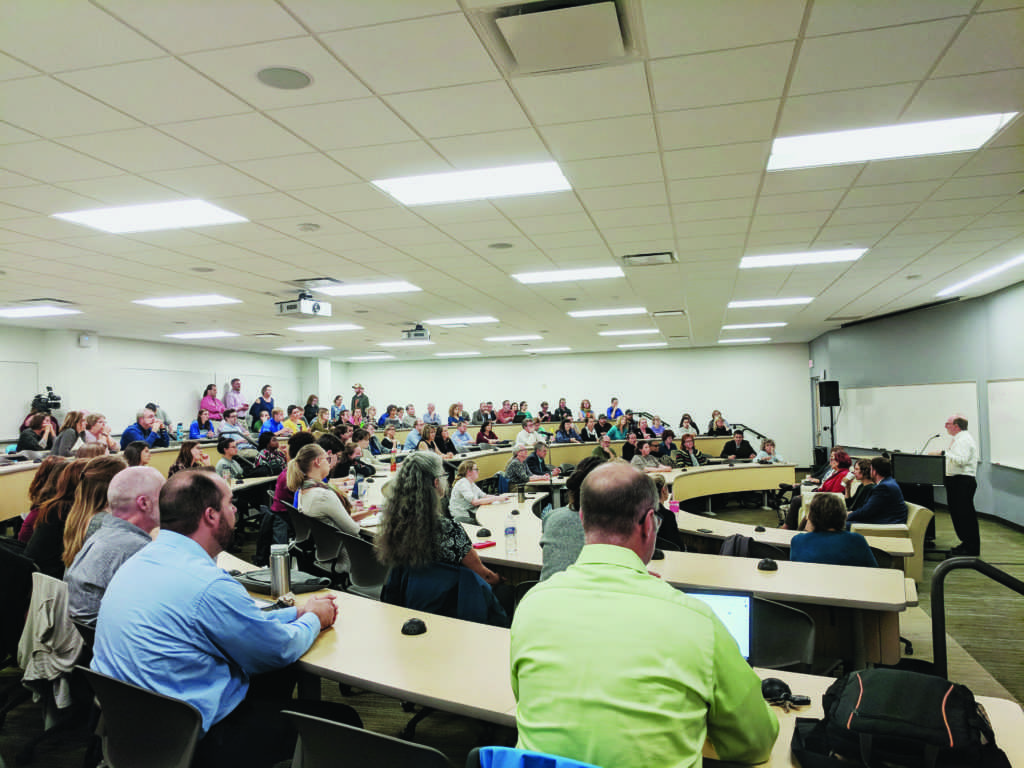Questions concerning Strategic Resource Allocation (SRA) document transparency, student involvement and process clarification were posed to a panel of six NMU administrators yesterday afternoon at a university forum.
Originally scheduled for Tuesday, Oct. 2, as a student-only forum, the university-wide forum took place at 4 p.m. in room 1322 of Jamrich Hall and hosted nearly 100 faculty members and students.
NMU President Fritz Erickson opened the forum with a description of the classification system used by the SRA process and its reports.
“One of the confusion points has been that we have programs in quintiles and that somehow those are some sort of ranking,” NMU President Fritz Erickson said. “Nothing could be further from the truth. Each program we’ve looked at we want to look at on its own merits, not on a concurrative basis.”
The first question posed to the panel focused on the SRA’s commitment to transparency.
“Both reports can now be viewed by students,” said Provost Kerri Schuiling. “Only the discussion that goes on in the task forces isn’t on the site.”
One student claimed that the reports were not accessible to students on the SRA website from Sept. 10 to Sept. 24, and asked whether students would be provided an extended comment period on the reports.
“We have no answer to that,” Schuiling said. “We’ll look
into it.”
Another student asked for clarification on the quintile classification system.
“It’s just a category,” Erickson said. “We could have called them dolphins, fish, elephants.”
Erickson explained that although programs are organized in respective quintile groups, one isn’t more important than another.
“Don’t put too much stock in the number itself,” Erickson added. “I’ve never viewed someone in a four as being less than someone in a two, it’d be like trying to rank your children.”
Additional questions addressed whether students would have a direct role in the remaining steps of the SRA process.
“In any opportunity where we can involve students, we have involved students and we will continue to involve students,” Schuiling said. “The student voice is very important on this campus.”
The next step of the SRA process calls upon the Implementation Task Force (ITF) to develop a plan to apply the results of the academic and support program reports, requires the executive council to post decisions and tentative implementation plans to the SRA website and asks for a review of decisions made by the Educational Policy Committee (EPC), Academic Senate, AAUP and NMUFA.
A set of recommendations resulting from the SRA will be presented by Erickson to the Board of Trustees (BOT) at its Dec. 14 meeting for
review.
More information on the SRA can be found on pages 8 and 9, and
www.nmu.edu/sra.






























